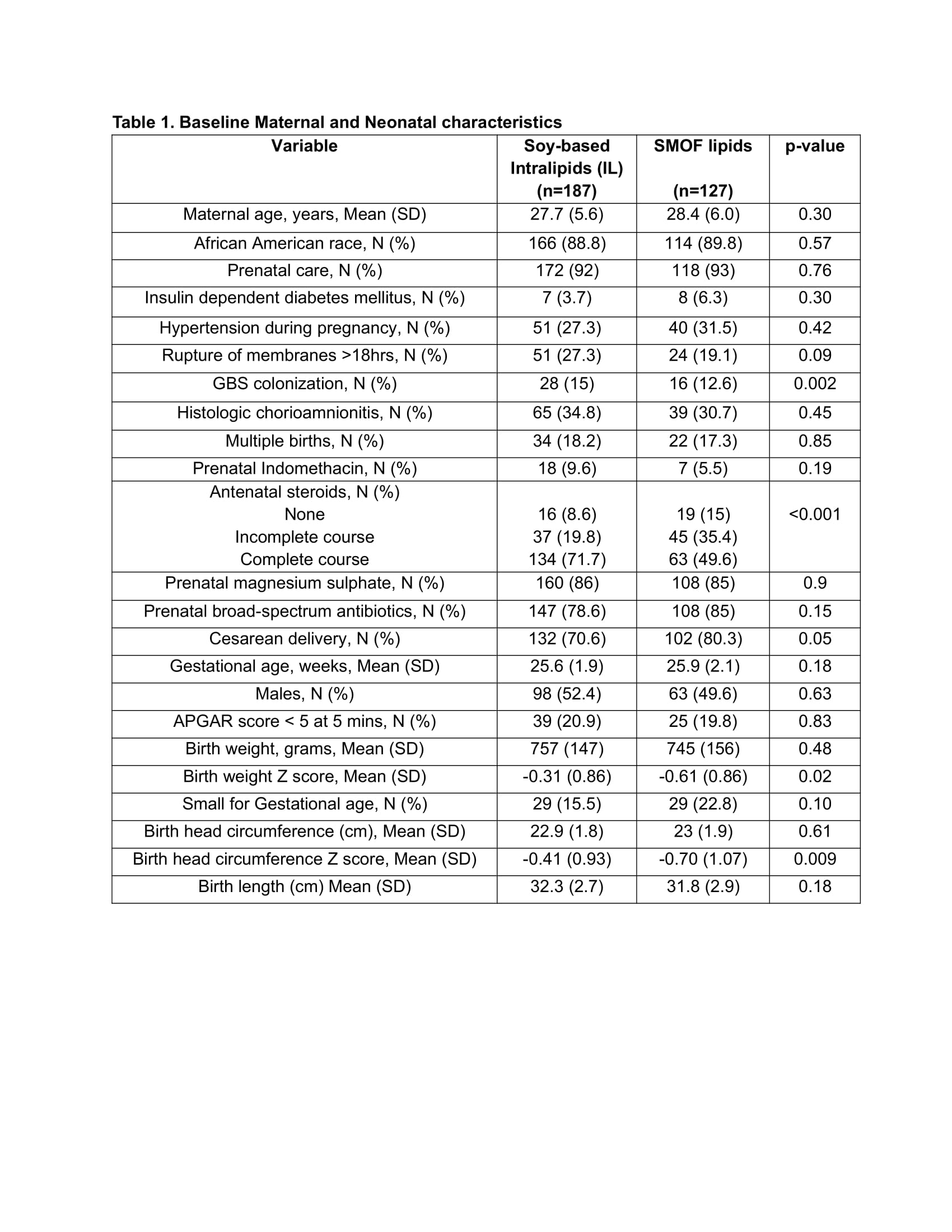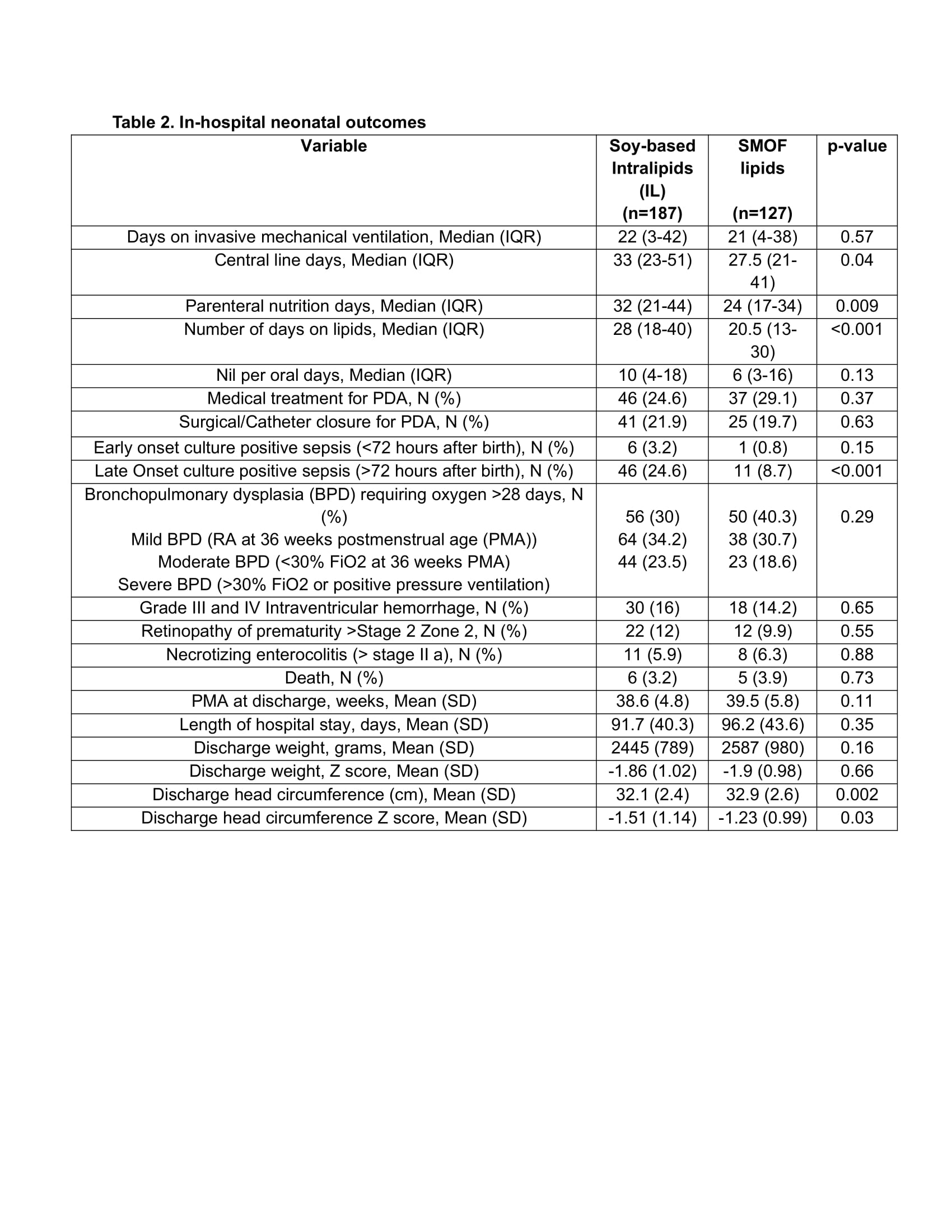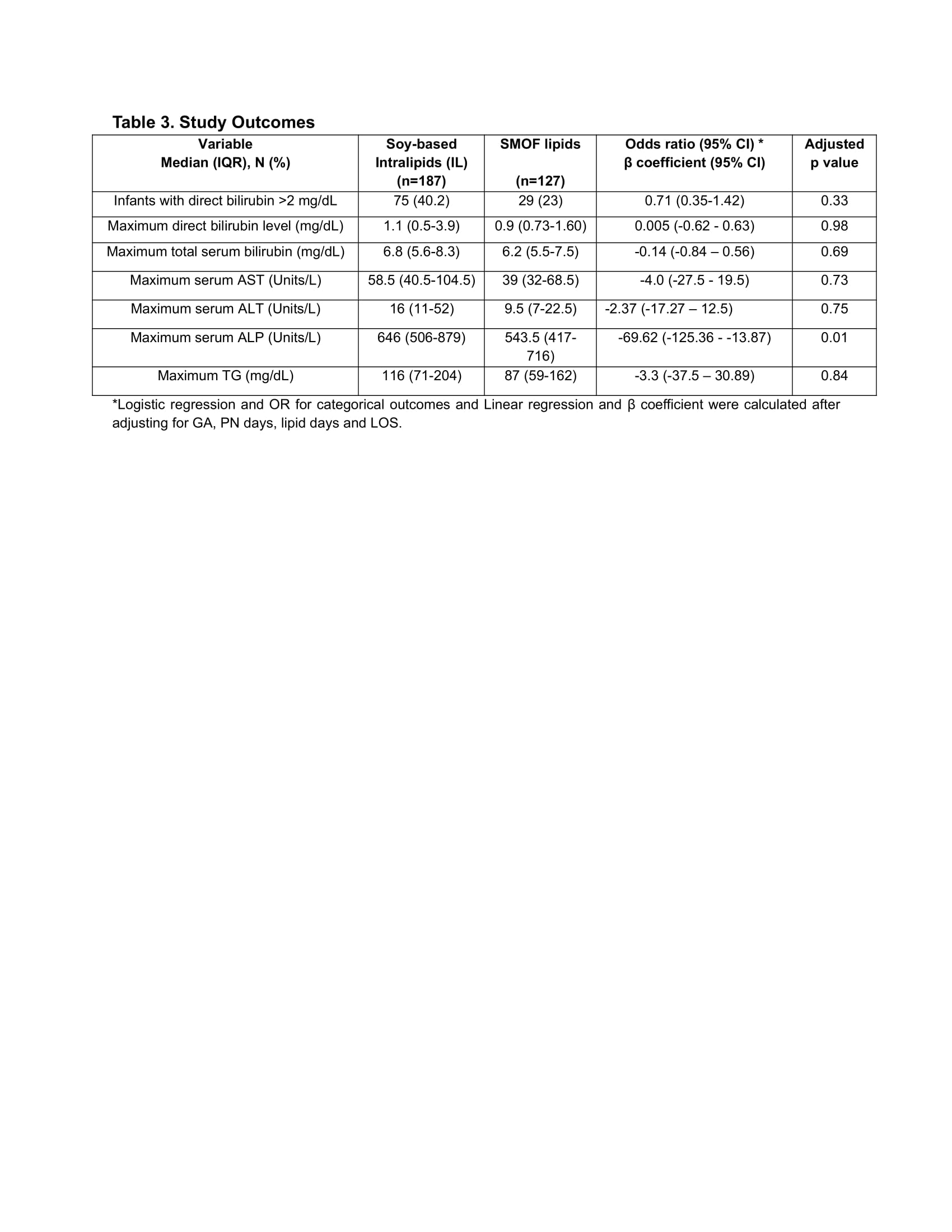Neonatology
Session: Neonatal GI Physiology & NEC 3: GI Physiology and Probiotics
544 - Parenteral Nutrition associated Cholestasis (PNAC) in Extremely Low Birth Weight (ELBW) Infants: Effect of Soybean-oil based Intralipids (IL) vs. Mixed Lipid Emulsion (SMOF)
Sunday, May 5, 2024
3:30 PM - 6:00 PM ET
Poster Number: 544
Publication Number: 544.2126
Publication Number: 544.2126
- PV
Pradeep Kumar Velumula, MD
Neonatologist
MercyOne Waterloo Medical Center
Cedar Falls, Iowa, United States
Presenting Author(s)
Background: PNAC is a complication of prolonged parenteral nutrition (PN) use. Soybean oil-based intralipids (IL), rich in ω-6 long-chain polyunsaturated fatty acids (LCPUFA’s) may contribute to the development of PNAC. SMOF lipids (mixed fatty acid emulsion of 30% soybean oil, 30% medium chain triglycerides, 25% olive oil, and 15% fish oil) with less concentration of ω-6 LCPUFA’s, phytosterols and more ω-3 LCPUFA’s are presumed to cause less hepatic injury.
Objective: To compare the effect of IL and SMOF lipids on PNAC in ELBW infants.
Design/Methods: A retrospective chart review of infants with birth weight < 1,000 grams, admitted to our NICU between January 2013 to December 2022, who received PN for >14 days was conducted. Infants with congenital liver or cardiac disease, TORCH infections, and metabolic disease were excluded. After obtaining IRB approval, data were collected for baseline maternal and infant demographics, neonatal morbidities, PN and type of lipids, growth parameters, and weekly liver function tests including total and direct bilirubin, alanine transaminase (ALT), aspartate transaminase (AST), alkaline phosphatase (ALP), and triglyceride (TG) levels. Our primary outcome was the development of PNAC, defined as direct bilirubin ≥ 2 mg/dL, in two groups receiving IL and SMOF. Secondary outcomes included maximum direct bilirubin, AST, ALT, ALP, and TG levels. Statistical analysis included t-test, chi2, Fisher’s exact and Mann-Whitney U tests as appropriate. Logistic regression (LR) was conducted to compare PNAC in groups after adjusting for gestational age (GA), PN days, lipid days, and late-onset sepsis (LOS).
Results: Our study cohort had 314 infants (187 in IL, 127 in SMOF group); 280 (89.2%) were black, 161 (51.3%) were male, mean (SD) GA was 25.7 (2.0) weeks and mean (SD) birth weight was 752 (150) grams. Baseline maternal and infant characteristics are shown in Table 1. The median number of days on PN and lipids was significantly higher in the IL compared to SMOF group (32 vs. 24 and 28 vs. 20.50 days) (Table 2). A significantly higher proportion of infants developed PNAC in the IL compared to SMOF group [75 (40.2%) vs 29 (23%) p=0.002]. Maximum total and direct bilirubin and ALP levels were higher in the IL group. On LR, adjusting for GA, PN days, lipid days, and LOS, no significant difference was noted in PNAC between the two groups (OR 0.71, 95 % CI 0.35-1.42, p-value 0.33) (Table 3).
Conclusion(s): The incidence of PNAC in ELBW infants did not differ between IL and SMOF groups. More studies are warranted to explore the effect of SMOF lipids in ELBW infants.



